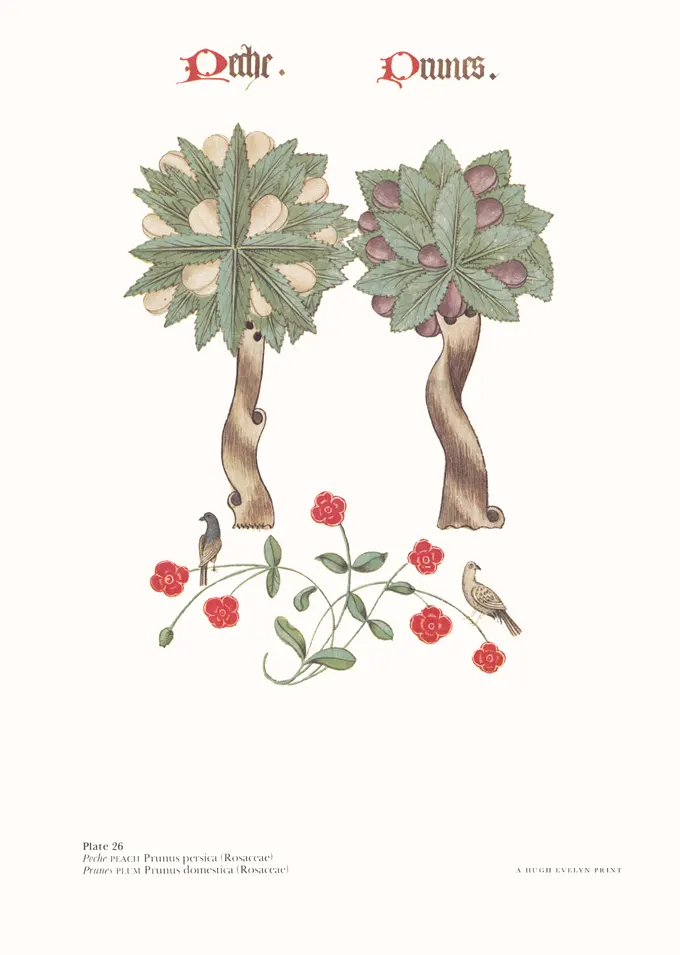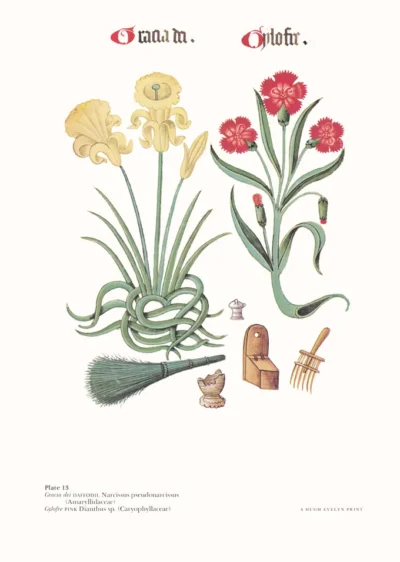Peach & Plum
£10.00
Peach and Plum (scroll down for a more detailed Description)
Published 1972 by © Hugh Evelyn Limited; drawn around 1525, these images were finished in gouache and watercolour (see description here)
Size: c. 23 x 33.5 cm [9 ″ x 13 ¼ ″] may vary slightly from printers’ cut 50 years ago
Printed on high white matt cardstock 144 g/sm2.
Print is STANDARD size – shipping is the same for 1 to 10 prints (based on largest print size in your order) – see Shipping & Returns.
In stock
- Satisfaction Guaranteed
- No Hassle Refunds (see Shipping and returns)
- Secure Payments
Description
Peche: The peach (Prunus persica) is a deciduous tree native to the region of Northwest China between the Tarim Basin and the north slopes of the Kunlun Mountains, where it was first domesticated and cultivated. It bears an edible juicy fruit called a peach or a nectarine. The Peach gets its specific name persica from Pliny (1) who referred to it as persica malus, or Persian fruit. He was mistaken, for the Peach tree is a native to China. Now widely cultivated both for its fruit and its flowers possibly much changed from its original state in the process. The Peach may have reached Europe in the 1st century BC. It has been grown in England from Anglo-Saxon times. Overindulgence in Peaches and ale having supposedly caused the death of King John in 1216. The fruits are edible raw or cooked. Bark and leaves both have medicinal uses, an infusion of either being used in the treatment of irritation or congestion of the gastric surfaces, and for coughs, whooping cough and chronic bronchitis. Peach seeds and those of its close relative the Apricot (Prunus armeniaca) can be pressed to yield Persic Oil used in the manufacture of toilet preparations and as a substitute for Almond Oil. Arber (2) has two woodcuts of the Peach, one from Ortus sanitus (1497) (3) and the other from Fuchs’ (4) De Historia Stirpium, which shows the tendency of engravers to give their trees square crowns, due to the rectangular shape of their wood blocks. Prunes: A plum is a fruit of the subgenus Prunus of the genus Prunus. The subgenus is distinguished from other subgenera (peaches, cherries, bird cherries, etc.) in the shoots having terminal bud and solitary side buds (not clustered), the flowers in groups of one to five together on short stems, and the fruit having a groove running down one side and a smooth stone (or pit). The Plum tree was thought to be native to south-west Asia. At the time of Cato (5) the Romans knew the fruit but not the tree. It is now thought both wild and cultivated Plums derive from hybrids between the native Sloe or Blackthorn (Prunus spinosa) which is widespread from Sutherland southwards, and the introduced Cherry Plum (Prunus cerasifera) and possibly happened more than once. They are widely grown for eating either raw or cooked. The term prune is restricted to the dried fruits of one variety. These fruits are often added to cathartic or laxative decoctions, since they both improve the flavour and enhance the effects.
Additional information
| Weight | 0.0064 kg |
|---|---|
| Dimensions | 22.8 × 33.6 cm |




